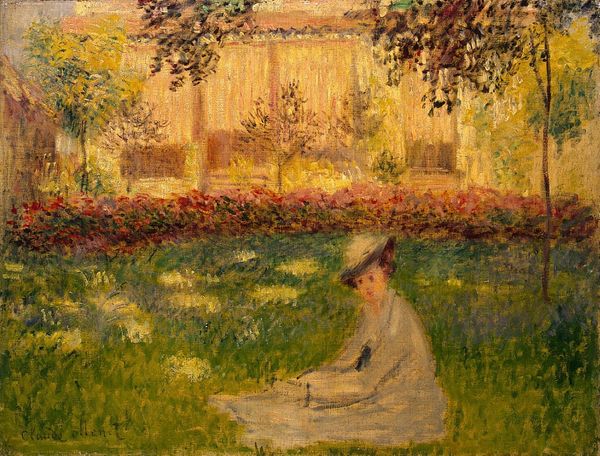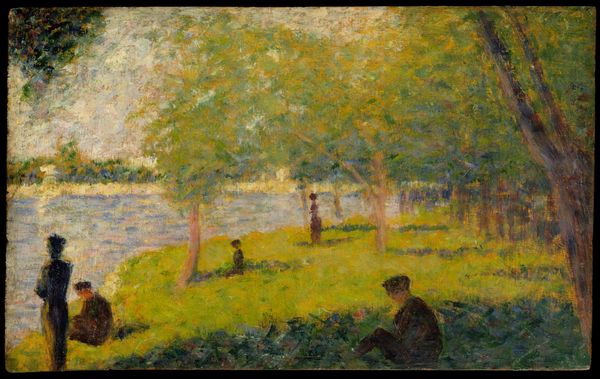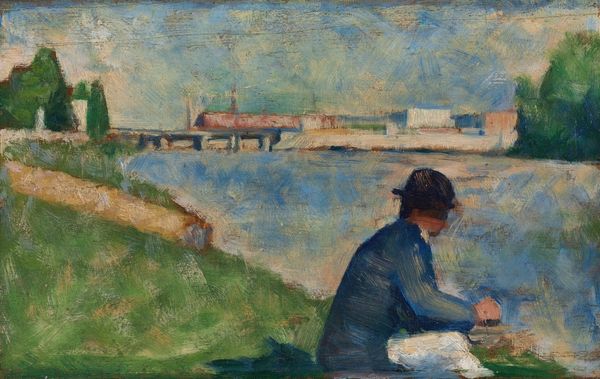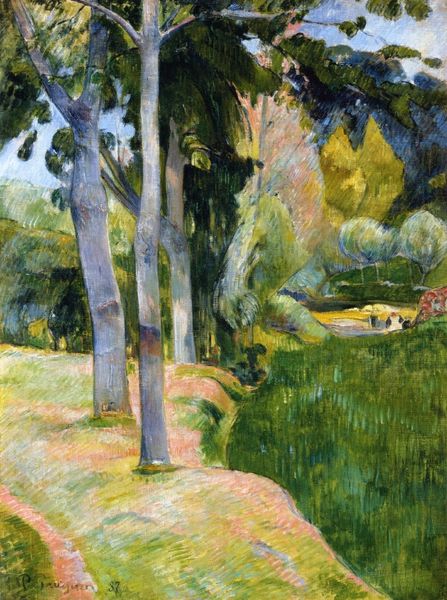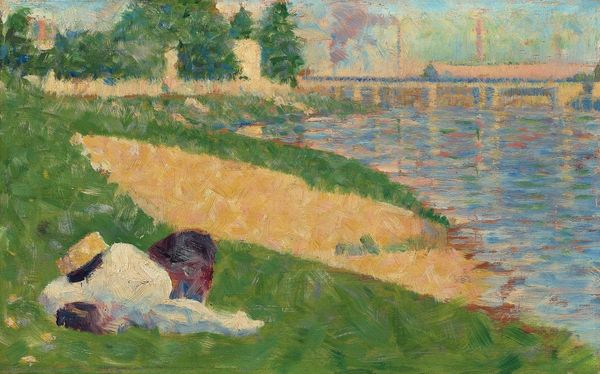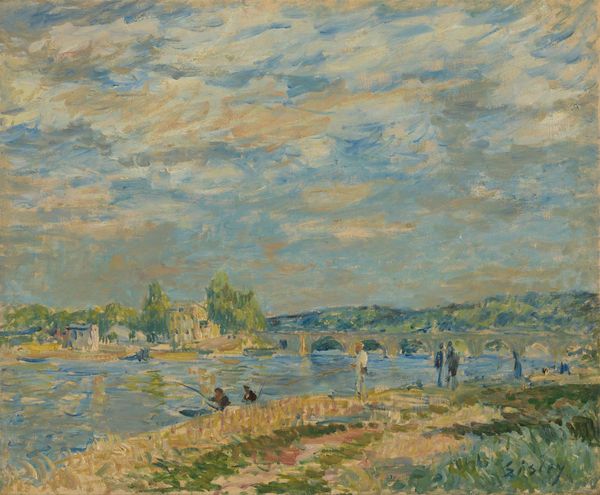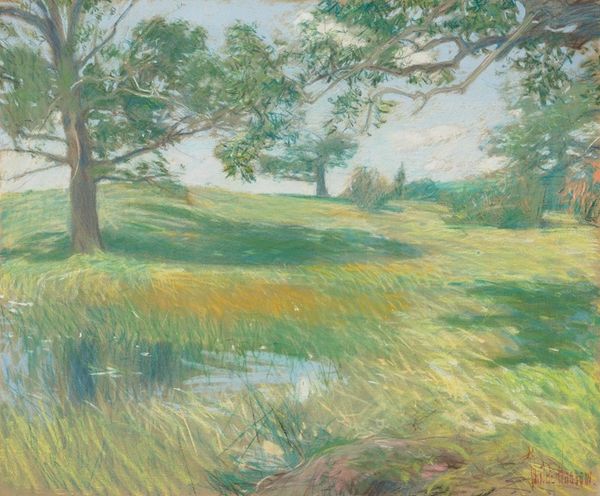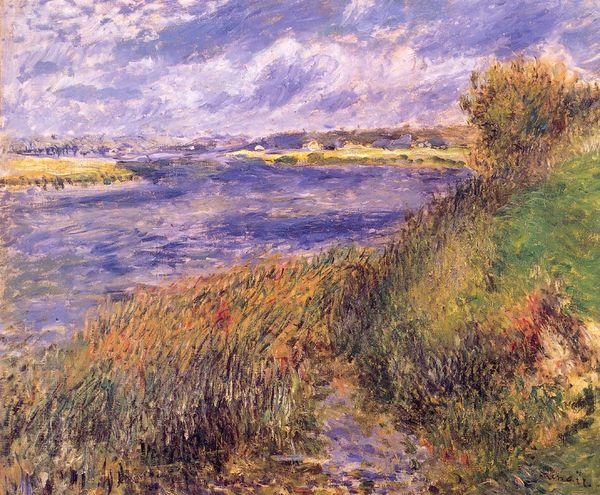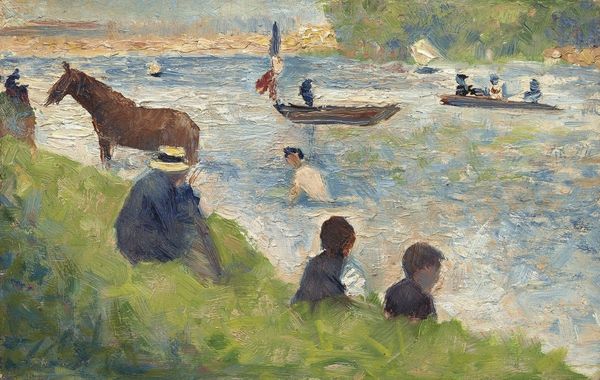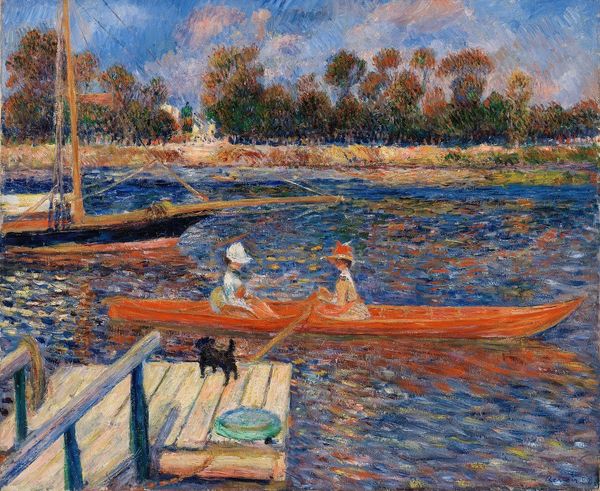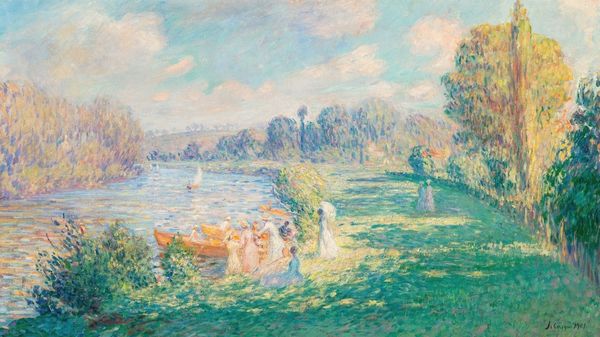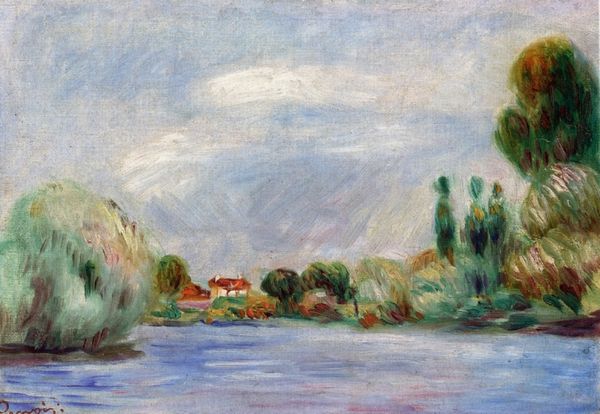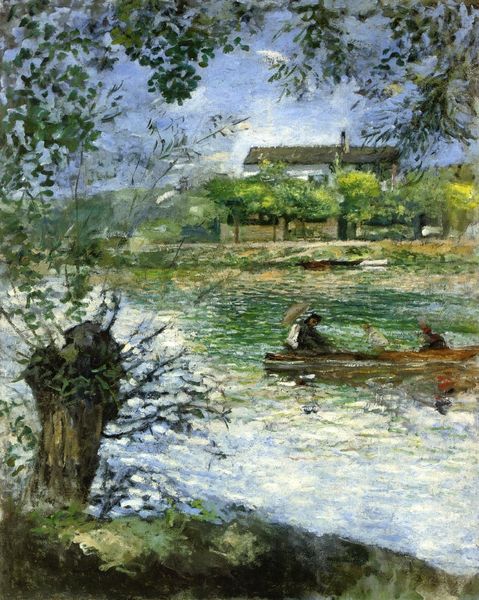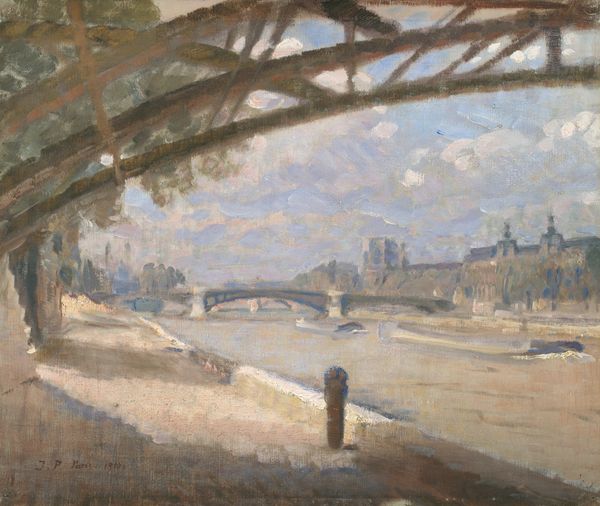
Dimensions: 33 x 41 cm
Copyright: Public domain
Curator: This is Édouard Vuillard's "Chateau of Fontainebleau," painted in 1919. It's an oil on canvas, a lovely example of his impressionistic style. Editor: Ah, it's like a faded dream! That figure in the foreground, lost in thought…there's such a stillness about it, almost melancholy. Curator: The figure certainly adds a layer of introspection. Fontainebleau itself, of course, is steeped in history. Vuillard is known for imbuing his domestic interiors with a similar sense of quietude. Editor: Quietude, yes, but with this almost vibrating energy in the brushstrokes. See how the water reflects the buildings and trees. It's less a literal reflection and more like an echo, a memory… Curator: Precisely. And Fontainebleau held complex associations, as a former royal residence later touched by revolution and war. I think Vuillard captures this multi-layered memory through that soft haziness and blurring. The château becomes an emblem of transient power, glimpsed through the scrim of time. Editor: Transient power… that's perfect. Because the buildings, even majestic like that, feel somehow…temporary. Like stage sets viewed from afar. Perhaps this viewer, ourselves, maybe, sitting along the water as that all washes past us. Does this have a wider commentary, an exploration, perhaps on society and changing landscapes after the First World War? Curator: The period certainly impacted artists. His choice of soft greens and blues gives it a washed-out quality that aligns with loss and memory. Though it's a cityscape, it's far from celebratory, right? It lacks the bombast associated with symbols of national identity. Editor: I hadn’t quite considered the cultural weight until now. Initially, I responded to the wistful tone but this painting… it sings of passing time, power in nature to return grandeur back to sediment. I will view all landscapes going forward with a new understanding, I feel. Curator: Indeed. I leave seeing Vuillard’s approach in this artwork offers viewers a layered interpretation of this historic setting. Thank you!
Comments
No comments
Be the first to comment and join the conversation on the ultimate creative platform.
